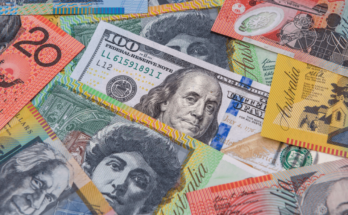EUR/USD has started the week quietly, as the pair trades in the 1.2870 range in Monday’s European session. We can expect thin trading on Monday, as the French and German markets are closed for a holiday. The US wrapped up last week on a positive note, as UoM Consumer Sentiment climbed to a six-month high. Today’s sole release is from the US, as FOMC member Charles Evans delivers a speech in Chicago.
Here is a quick update on the technical situation, indicators, and market sentiment that moves euro/dollar.
EUR/USD Technical
- Asian session: Euro/dollar showed some movement, touching a low of 1.2819 before moving higher and consolidating at 1.2847. The pair has moved higher in the European session.
- Current range: 1.2805 – 1.2880.
Further levels in both directions:Â 
<img alt=â€EUR USD Daily Forecast May17″ src=â€https://forexcrunch-wpengine.netdna-ssl.com/wp-content/uploads/2013/05/EUR-USD-Daily-Forecast-May17-350×196.png†width=â€350″ height=â€196″ />Â
<img alt=”EUR USD Daily Forecast May16″ src=”https://forexcrunch-wpengine.netdna-ssl.com/wp-content/uploads/2013/05/EUR-USD-Daily-Forecast-May16-350×196.png” width=”350″ height=”196″ />
<img alt=”EURUSD Technical outlook fundamental analysis and sentiment for May 15 2013 currency trading” src=”https://forexcrunch-wpengine.netdna-ssl.com/wp-content/uploads/2013/05/EURUSD-Technical-outlook-fundamental-analysis-and-sentiment-for-May-15-2013-currency-trading-350×186.png” width=”350″ height=”186″ />
- Below: 1.2805, 1.2750, 1.27, 1.2624 and 1.2587.
- Above: 1.2880, 1.2960, 1.30, 1.3030, 1.31, 1.3160 and 1.32.
- 1.2805 is the border of the long term 1.2805 – 1.3170 and is critical support.
- The pair is testing 1.2880 on the upside. 1.2960 is the next line of resistance.
Euro steady in thin holiday trading – click on the graph to enlarge.
EUR/USD Fundamentals
- 17:00 Federal Reserve Bank of Chicago President Charles Evans speaks.
For more events and lines, see the EUR/USD
EUR/USD Sentiment
- US data mostly down: The markets were treated to a host of disappointing US releases last week. Inflation and manufacturing numbers fell below expectations, and housing data did not meet the estimate. Unemployment Claims had looked impressive in recent readings, but the key indicator couldn’t keep pace on Thursday, as the number of new claims jumped to 360 thousand, blowing past the estimate of 332 thousand. There was some good news from Building Permits, which were up nicely. On Friday, there was better news as UoM Consumer Sentiment shot up from 72.3 points to 83.7 points. This was well above the estimate of 77.9 points, and points to a sharp increase in consumer confidence. However, the host of weak numbers we saw last week will again bring into question the extent of the US recovery, which has not been able to demonstrate sustained growth and continuous positive releases.
- Euro-zone recession continues: Eurozone numbers did not have a good week, as economic releases pointed to contraction in the Eurozone for the third consecutive quarter. Output fell by 0.2%.GDP numbers out of France and Italy continue to post declines, and both missed their estimates. Germany was a big disappointment, as GDP increased by just 0.1% in Q1, short of the 0.3% gain expected. The euro lost ground as a result, and dipped below the 1.29 level for the first time since early April.
- German numbers disappoint: Last week, the “locomotive of Europe†looked tired and slow, as German data failed to impress. ZEW Economic Sentiment, one of the most important German releases, came in well below the estimate. German CPI and WPI posted declines, indicating weak activity in the economy. GDP posted a slight gain of 0.1%, but this was below the 0.3% forecast. If the Eurozone is to have any hope of getting back on solid economic footing, it will need Germany to lead the way. The markets will be waiting to see if German releases get back on track this week.
-  Will the Fed scale back QE?: This is the vexing question facing the Federal Reserve – is the US recovery strong enough to justify modifying or even terminating the present round of QE? On Thursday, John Williams, president of the Federal Reserve Bank of San Francisco, stated that the Fed could begin reducing QE this summer and end bond buying late in 2013. The markets seem to get excited after every solid US release, with speculation rising that the Fed could take action. As the QE program is dollar negative, any moves by the Fed to wind up QE would be bullish for the dollar.



